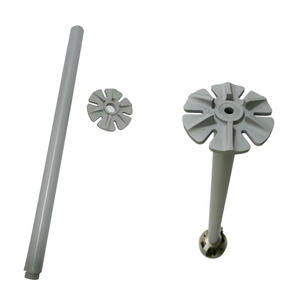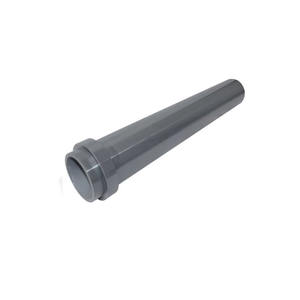Professional industry ceramic supplier, silicon nitride, silicon carbide, aluminum nitride and any other kinds of ceramics.
PRODUCT PARAMETERS
Description
Overview of High Thermal Conductivity Aluminum Nitride Ceramic Substrate for Semiconductor Industry
High Thermal Conductivity Aluminum Nitride Ceramic Substrate for Semiconductor Industry is an advanced technical ceramic renowned for its exceptional thermal conductivity and reliable electrical insulation. It is a key material in high-power electronics, LED lighting, and semiconductor processing, effectively managing heat in demanding applications where performance and reliability are critical.
Features of High Thermal Conductivity Aluminum Nitride Ceramic Substrate for Semiconductor Industry
- High Thermal Conductivity: Offers excellent heat dissipation, comparable to beryllia (BeO).
- Electrical Insulation: Maintains high electrical resistivity even at elevated temperatures.
- Low Thermal Expansion: Matches the coefficient of thermal expansion of silicon, ideal for semiconductor substrates.
- Excellent Mechanical Strength: Possesses good mechanical properties for structural integrity.
- High-Temperature Stability: Performs reliably in harsh environments and at high temperatures.
- Non-Toxic: A safe alternative to beryllium oxide (BeO) ceramics.
Specification of High Thermal Conductivity Aluminum Nitride Ceramic Substrate for Semiconductor Industry
This Aluminum Nitride ceramic substrate is for the semiconductor industry. It handles high heat extremely well. Heat management is critical in electronics. Components generate a lot of heat. This heat must go away fast. Otherwise parts get too hot. Overheating damages components. Performance drops. Reliability suffers. This AlN substrate moves heat efficiently.
Its thermal conductivity is very high. This number measures how easily heat travels through the material. Higher is better for cooling. Our AlN offers thermal conductivity up to 180 W/mK. That’s much better than regular alumina. Alumina is around 25 W/mK. AlN spreads heat fast. This keeps device temperatures lower. It prevents hotspots.
The thermal expansion coefficient is important too. It matches silicon chips well. Silicon chips expand when hot. The substrate expands too. Different expansion rates cause stress. Stress cracks the chip or the substrate. AlN expands at a rate close to silicon. This reduces stress problems. It makes the bond stronger. Reliability improves.
Electrical insulation is another key feature. The substrate must not conduct electricity. It isolates the circuit. AlN is an excellent electrical insulator. It has high electrical resistance. Voltage breakdown strength is high. This prevents electrical shorts. It keeps the circuit safe.
Surface quality is very smooth. A smooth surface is needed. Components attach directly sometimes. Thin films deposit onto it. A rough surface causes defects. Our AlN substrates are polished finely. They have a very low surface roughness. This ensures good bonding. It allows precise patterning.
These substrates are strong. They resist breaking. They handle thermal cycling well. Heat up, cool down, repeat. Many materials fail after cycles. AlN maintains its strength. It lasts a long time. This is vital for demanding applications.
You find these substrates in power modules. Power devices create intense heat. LED packages use them too. High-brightness LEDs need cooling. RF devices benefit from AlN. Laser diodes require good heat sinking. Any application needing fast heat removal can use it. It’s the top choice for thermal management.
Applications of High Thermal Conductivity Aluminum Nitride Ceramic Substrate for Semiconductor Industry
Aluminum nitride ceramic substrates are vital in modern semiconductors. They move heat away very well. This high thermal conductivity is key. Semiconductor devices generate a lot of heat. Too much heat harms performance and lifespan. Aluminum nitride helps prevent this. It keeps things cooler and more reliable.
These substrates also stop electricity from flowing through them. They are electrical insulators. This is necessary. Circuit paths need isolation. Aluminum nitride provides this insulation effectively. It also expands and contracts similarly to silicon chips. This thermal expansion match is important. It reduces stress. It prevents cracking or warping during temperature changes. This improves manufacturing yield.
One major use is in high-power LEDs. Bright LEDs create significant heat. Aluminum nitride substrates draw this heat out fast. They protect the delicate LED chips. They allow brighter light and longer life. Power electronics also depend on these substrates. Devices like IGBTs and MOSFETs handle high currents. They get very hot. Aluminum nitride baseplates manage this heat efficiently. They enable smaller, more powerful modules.
Laser diodes need precise thermal control. Aluminum nitride substrates are perfect here. They quickly remove heat from the laser junction. This keeps the wavelength stable. It prevents damage. Radio frequency devices benefit too. RF components are sensitive to temperature shifts. Aluminum nitride maintains stable operating conditions. It ensures consistent signal quality. The material is also strong mechanically. It resists wear and chemicals. This durability is valuable in demanding semiconductor environments.
Company Profile
Tanki New Materials Co.Ltd. focus on the research and development, production and sales of ceramic products, serving the electronics, ceramics, chemical and other industries. Since its establishment in 2015, the company has been committed to providing customers with the best products and services, and has become a leader in the industry through continuous technological innovation and strict quality management.
Our products includes but not limited to Aerogel, Aluminum Nitride, Aluminum Oxide, Boron Carbide, Boron Nitride, Ceramic Crucible, Ceramic Fiber, Quartz Product, Refractory Material, Silicon Carbide, Silicon Nitride, ect. please feel free to contact us.

Payment Methods
T/T, Western Union, Paypal, Credit Card etc.
Shipment Methods
By air, by sea, by express, as customers request.
5 FAQs of High Thermal Conductivity Aluminum Nitride Ceramic Substrate for Semiconductor Industry
What makes aluminum nitride substrates special?
Aluminum nitride conducts heat very well. It moves heat away from electronic parts fast. This prevents overheating in devices. Good thermal management keeps semiconductors reliable.
How does aluminum nitride handle electricity?
Aluminum nitride is an electrical insulator. It does not conduct electricity. This stops unwanted electrical paths. Components stay electrically isolated. This is vital for circuit boards.
Why does thermal expansion matter?
Aluminum nitride expands similarly to silicon chips when heated. The expansion rates match closely. This reduces stress on solder joints. Connections stay strong during temperature changes. Fewer failures occur.
Is aluminum nitride chemically stable?
Yes, aluminum nitride resists many chemicals. It handles harsh processing environments well. Strong acids or bases cause minimal damage. This durability supports various manufacturing steps.
Where are these substrates commonly used?
They are essential in power electronics. High-power LEDs use them for heat dissipation. Laser diodes rely on them too. Advanced semiconductor packaging utilizes these substrates. RF modules benefit from their properties.
REQUEST A QUOTE
RELATED PRODUCTS
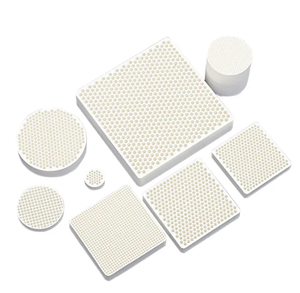
140× 190mm 0.38mm 0.5mm 0.635mm Thick Aluminum Nitride Ceramic Plate Aln Substrate

Aluminum Nitride Aln Ceramic Coating Aln Powder
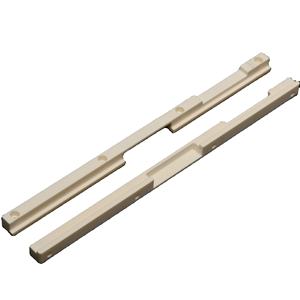
High Thermal Conductivity Aln Ceramic Plate Aluminum Nitride Substrate for Power Electronics
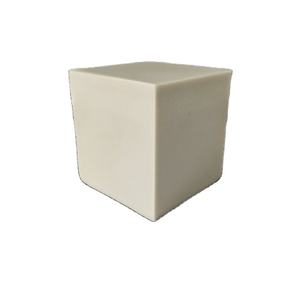
High Purity Customized Ain Aluminum Nitride Ceramic Plate Thermal Management Material
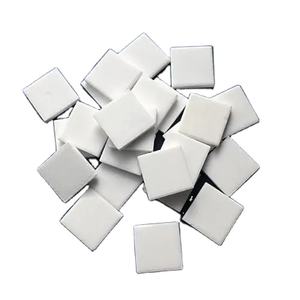
Factory Customized Square Wear-Resistant High Thermal Conductivity Low Dielectric Loss Aluminum Nitride Ceramic Substrate High Temperature Resistant
